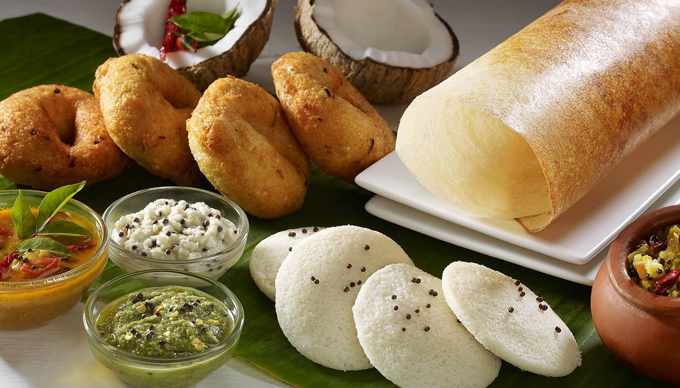
By admin@rf
Food has always played a crucial part in creating culture, customs and traditions from ancient times. Each civilization that has ever formed has circulated around the agriculture and food habits they have created. Indian food culture is no different. By adapting and adopting, the Indian palette has nurtured and flourished its food habit to be one of the best around the globe. Indian food is one of the most liked and enjoyed cuisines around the world. It will be hard to even summarize what really is the actual Indian food Culture in just a few words.
The structure and culture of Indian food is deeply molded by the trading, invasions, and colonization. India not only has a pure authentic diet style it changes from region to region. India has always welcomed foreign food culture and clubbed those with indigenous crops, spices and made a new variant of its own. The Persians, Romans, East Asians, The French, The Portuguese, and the British have contributed enough to the Indian cuisines. Sultanates and Mughals have contributed Naan breads, Tandoors, Pilafs and Biryani and Indians did their makeshift by localizing it into regional delicacies in their own way. English breakfast has become a trend in India by using Bread, Butter, Jam, and Omelets.
The diversity of Indian food is tremendous. Almost every state has its own food culture.The Northern Indian food style is mainly focused on Wheat. Southern and East Indian food culture is based on Rice. Western Indian states have more corn, gram flour and lentils in their cuisines. There are many similarities and the same amount of differences in every Indian cuisine depending on the availability of food products and the traditions they follow. The Sambar from the Southern States of Kerala, Karnataka,Tamil Nadu, Andhra Pradesh and Telangana has similar cooking style yet tastes very different.
The regional delicacies are mostly followed by traditions, rituals and religious practices. The food is considered sacred in almost every religious practice. A portion of Indians eat vegan food, and a larger percentage is vegetarians. The coastal regions prioritize fish and marine food, and many other eat meat and other animal products.
Rice is a significant part of an Indian’s life. Most Indians have rice in their meals in one form or another. There is no set meal for an Indian as it varies from one state to another. So there is no typical “Indian” food. There is only the collection of regional foods that are clubbed together to create a delicious meal called “Indian”. One could distinguish a person’s caste, religion and living setting by the food they used to eat.
Indian meals have its importance in the regular household and the meal time is when the whole family comes together. It is more of a bonding time for the family. It is a feast for the eyes as well as mind. Important discussion, casual talks and much more are part of these meals. Food is not just a means to fill the stomach, but a connection to the familial bonds as well. Indian family meals are the perfect example of ‘Family that eats together, stays together.’
These days almost every famous Indian dish is available in every corner of India. Also the traditional, regional delicacies are spread all over India. Now that the reach is long and many dishes are famous nationally and internationally. Seasonal dishes can also be found all time of the year because the products are available all time around. Authentic and improvised versions of famous Indian dishes are making its way in many foreign palettes. Street foods, Indian Breads, Snacks, and Desserts there are many that are world famous.
It is said that there are over 200 desserts in the Indian continent. Most of the early dessert used honey as sweetener until the Spanish introduced sugar to the Indian market. GulabJamun, Jalebi, Srikhand, Payasam, is some of the desserts that have a good demand in the international markets. Chaats and savoury snacks are another list that is famous from India. Many restaurants in India serve not only the regional favorites but also serve many dishes that are from other states as well. In foreign countries, many of the Indian dishes are famous.
As there are many multinational brands from the U.S and Europe are placing their foot in India, it is time for India to be a prominent food giant in the world too. The Indian food market is now focusing on the precooked packaged meals and dishes.The multi food chain companies from India are expanding their wings overseas as well. The local produce is not just local anymore. Brands like Haldirams, MTR, are well known global packaged Indian food giants. The cafe culture is also taking roots in India. The restaurants that serve multi-national cuisines are also a part of India’s adaptability to the current food trends.
The food products that Revival produces are 100% organic. The processes taken place in packaging are eco-friendly. Revival carries the traditional Indian cuisine with a modern touch of easy to cook. Each package is a great reminder of home cooked meals even if you are away from your closed ones. With mixing traditional and regional taste with the modern aspect of easy cooking, Revival has created a home in a small package.
India’s food culture is always evolving; it is a never ending process of adapting, adopting and asserting a new recipe that has Indianness with a twist. Indian food culture never really discards the traditional cooking style or local dishes even when we are open to new ventures. Even when we have McDonald or KFC, we never forget the local street food vendor. Even when we have Starbucks we never avoid filter coffee. We always preserve Indianness in its full glory.

